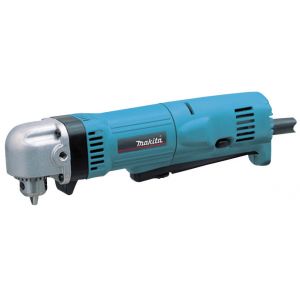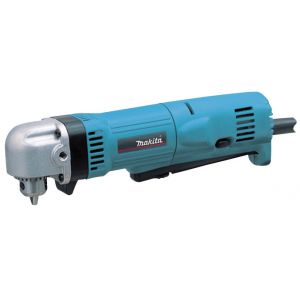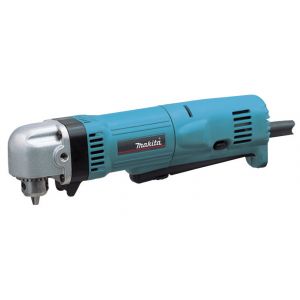The online power tool trade counter:
Explore our range of 10mm keyed chuck angle drills, which require a chuck key to change the drill bit. These drills are designed to drill wood, metal and plastic surfaces, but not stone, brick or concrete. Angle drills are designed to drill surfaces that are in tight locations. For example, they are commonly used to drill holes in joists for electrical wiring, where the location in which the wires are run can be confined with little space to work and manoeuvre the drill.
- The key consideration when selecting between angle drills is the maximum drilling diameter required. 10mm refers to maximum drilling diameter in steel, you can use a larger drill bit for plastic & wood providing it has a 10mm or smaller diameter shank to fit the chuck. The drill bit is tightened into the chuck using a key supplied.
- Choosing your power source: The first choice is between a mains (110v or 240v) or a cordless tool. 240v tools are used with normal mains power whilst 110v tools are used on construction sites for safety reasons.
- With regards to cordless (battery powered) tools there are a variety of chemical types; Li-ion is the latest technology, prior to that it was Ni-MH and Ni-Cad was the original. The higher the Ah (Ampere hours) the longer the interval between charges; the fewer times you recharge a battery the longer it will last. Some cordless tools can also come without batteries - sometimes referred to as naked, bare units or body only. These tools are supplied without a battery or charger and more often than not without any accessories; as a result they are significantly cheaper in price.
- Additionally there is often a choice between single or 2 speed gears. Most angle drills have a variable speed function.





